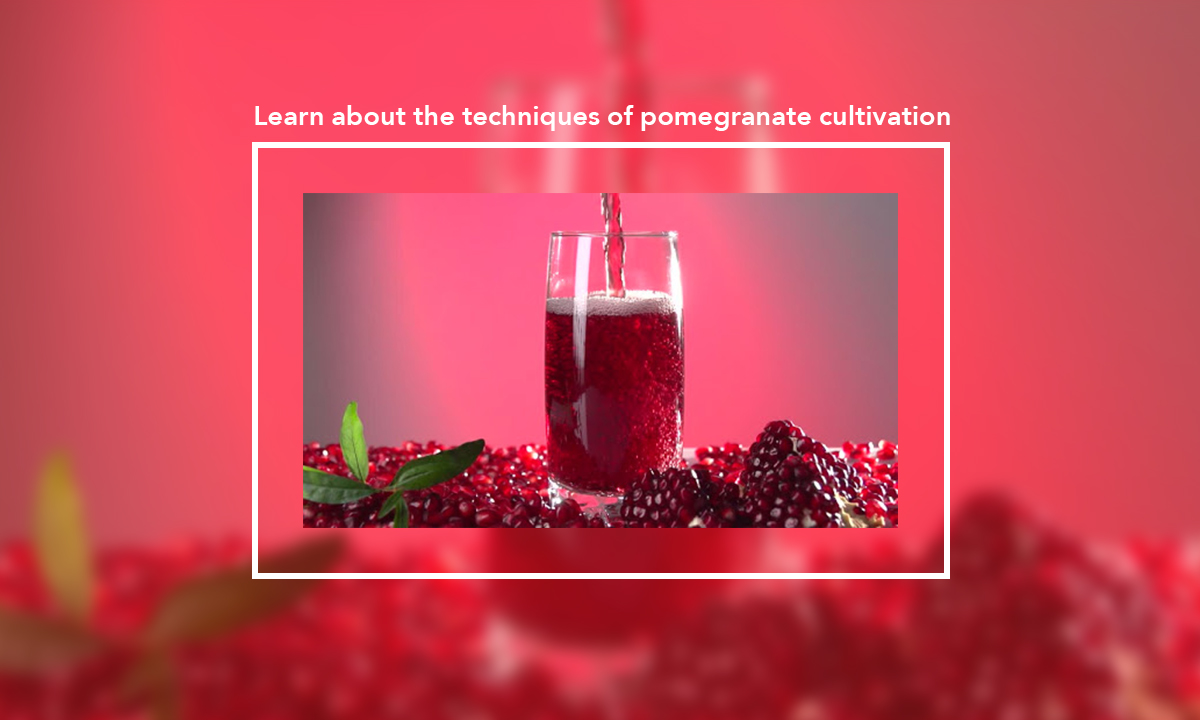Introduction of Pomegranate
Pomegranate is one of India’s commercial fruit plants. It is native to Iran. Pomegranate is known as a crop tolerant of drought, but periodic irrigation is mandatory for the manufacturing of commercial yield. Water concentrations and optimum irrigation systems rely on a multitude of variables such as soil type, tree size, physiological stage, and potential evaporation. The tree usually requires little additional irrigation. They are frequently acquired from cultivators and less from formal studies.
Climate for Growing Pomegranate
Pomegranates prefer a semi-arid mild-temperate to subtropical climate and are naturally adapted to regions with cool winters and hot summers. A humid climate adversely affects the formation of fruit. The tree can be severely injured by temperatures below 12° F. In the U. S. pomegranates can be grown outside as far north as southern Utah and Washington, D.C. but seldom set fruit in these areas. The tree adapts well to container culture and will sometimes fruit in a greenhouse.
Soil for pomegranate cultivation
The pomegranate does best in well-drained ordinary soil, but also thrives on calcareous or acidic loam as well as rock strewn gravel.
Irrigation
In the event of pomegranate watering, the climate and plant specifications are taken into account. In case they are planted as mrig-bahar, irrigation (planting during mid-May, June-July) is performed frequently until the monsoons are placed in. Irrigation must be performed in winter once in 2 weeks and in summer weekly.
Drip irrigation is the preferred irrigation technique because it helps to save water by 44 percent. The average annual water requirement is 20 cm through gout irrigation. Approximately 64 percent of water is saved when using sugarcane mulch. The output is also improved by 30-35%
Plant Spacing
In temperate regions, high-density planting is accepted. A distance of 5-6 m. Usually followed in northern India as well as in the plains of the Deccan plateau. High-density planing with spacing results in 2 to 2.5 times more yield than when the standard planting distance of 5×5 m is reached. is accepted. A spacing of 2.5 meters×4 m was doped by farmers. Closer spacing improves the incidence of disease and pests.
Methods of growing Pomegranate
- This technique of cultivation is more frequently followed. The distance between plants relies on the sort of climate and soil. A distance of 4-5 meters is preserved in the event of very light soils.
- Pits of dimensions 60X60X60 cm are dug about a month prior to planting and kept open under the sun for a fortnight. And they are left open for solarization for a period of two weeks.
- High-density cultivation is followed for pomegranate plantation. Hence, weeding must be done manually
- Pomegranates bear three types of flowers, viz. male with rudimentary ovaries, hermaphrodite with a well-developed style.
Pests and Diseases:
Pomegranates are relatively free of most pests and diseases. Minor problems are leaf and fruit spot and foliar damage by white flies, thrips, mealybugs and scale insects. The roots are seldom bothered by gophers but deer will browse on the foliage.
Harvest:
The fruits are ripe when they have developed a distinctive color and make a metallic sound when tapped. The fruits must be picked before over maturity when they tend to crack open, particularly when rained on. The pomegranate is equal to the apple in having a long storage life. It is best maintained at a temperature of 32° to 41° F. and can be kept for a period of 7 months within this temperature range and at 80 to 85% relative humidity without shrinking or spoiling. The fruits improve in storage, becoming juicier and more flavorful.
The fruit can be eaten out of hand by deeply scoring several times vertically and then breaking it apart. The clusters of juice sacs are then lifted out and eaten. The sacs also make an attractive garnish when sprinkled on various dishes. Pomegranate fruits are most often consumed as juice and can be juiced is several ways. The sacs can be removed and put through a basket press or the juice can be extracted by reaming the halved fruits on an ordinary orange juice squeezer. Another approach starts with warming the fruit slightly and rolling it between the hands to soften the interior. A hole is then cut in the stem end which is placed on a glass to let the juice run out, squeezing the fruit from time to time to get all the juice. The juice can be used in a variety of of ways: as a fresh juice, to make jellies, sorbets or cold or hot sauces as well as to flavor cakes, baked apples, etc. Pomegranate syrup is sold commercially as grenadine. The juice can also be made into a wine.
Commercial Potential:
The primary commercial growing regions of the world are the Near East, India and surrounding countries and southern Europe. In California commercial cultivation is centered in the southern San Joaquin Valley. Consumer demand in this country is not great. More pomegranate fruits probably wind up as decorations in fruit bowls than are consumed.
To see all liquid filling and packaging machines from Cubii company of international quality in packaging, click on the following link





